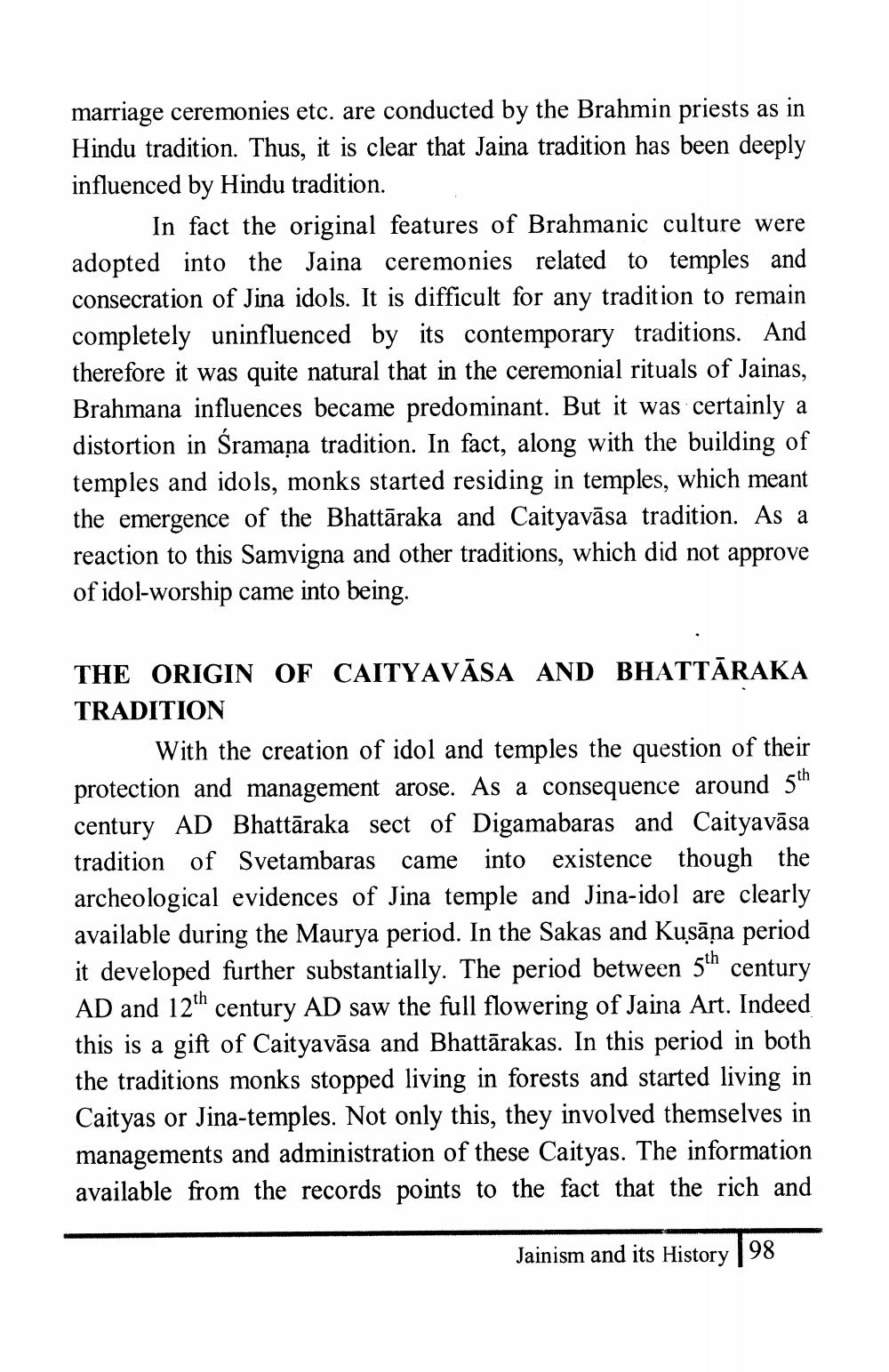________________
marriage ceremonies etc. are conducted by the Brahmin priests as in Hindu tradition. Thus, it is clear that Jaina tradition has been deeply influenced by Hindu tradition.
In fact the original features of Brahmanic culture were adopted into the Jaina ceremonies related to temples and consecration of Jina idols. It is difficult for any tradition to remain completely uninfluenced by its contemporary traditions. And therefore it was quite natural that in the ceremonial rituals of Jainas, Brahmana influences became predominant. But it was certainly a distortion in Śramana tradition. In fact, along with the building of temples and idols, monks started residing in temples, which meant the emergence of the Bhattaraka and Caityavāsa tradition. As a reaction to this Samvigna and other traditions, which did not approve of idol-worship came into being.
THE ORIGIN OF CAITYAVĀSA AND BHATTARAKA TRADITION
With the creation of idol and temples the question of their protection and management arose. As a consequence around 5th century AD Bhattaraka sect of Digamabaras and Caityavāsa tradition of Svetambaras came into existence though the archeological evidences of Jina temple and Jina-idol are clearly available during the Maurya period. In the Sakas and Kusāņa period it developed further substantially. The period between 5th century AD and 12th century AD saw the full flowering of Jaina Art. Indeed this is a gift of Caityavāsa and Bhattārakas. In this period in both the traditions monks stopped living in forests and started living in Caityas or Jina-temples. Not only this, they involved themselves in managements and administration of these Caityas. The information available from the records points to the fact that the rich and
Jainism and its History 198




